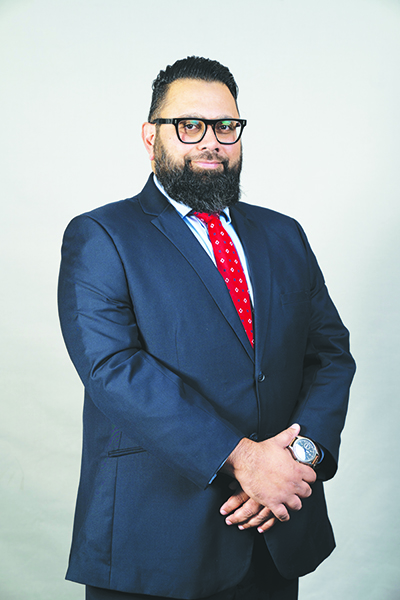By Zubair Suliman – Investment Director, Norsad Capital
We’re often told that education is the best way out of poverty, but for many in Sub-Saharan Africa, the path out is often broken, especially for those who need an escape route the most.
There are many reasons why education barriers in the sub-region persist. For one, enrollment levels remain a problem. World Bank economists found that more than one in five primary school-aged children in Sub-Saharan Africa weren’t in school last year. And, according to ISS African Futures, once kids are in school we also battle to keep them there.
Despite progress made since the Education for All movement in the 1990s, there are still too few teachers to cater for the growing student population, according to the Common Wealth of Learning – resulting in lower engagement time with individuals and higher workloads for teachers. The 2023 Sustainable Development Goals (SDG) progress report lays bare just how far behind the world is falling in achieving quality education for all.
Without more investment, only one in six countries will reach the target of getting all its adults to finish secondary school. A goal which, according to UNESCO, if achieved, could reduce global poverty by half. The SDG progress report indicates that more capital is also needed to close the nearly $100 billion yearly financing gap that lower and middle-income countries face. Without this funding, SDG education targets will remain unattainable.
But where should we invest to make the biggest impact on learner retention and outcomes? With time running out to meet UN goals to end poverty and promote prosperity, let’s look at the funding channels which have the most influence on a child’s school day for solutions.
Improve the daily school experience
Researchers for the International Journal of Educational Research analysed just under two decades of peer-reviewed research to understand what kinds of projects resulted in benefits for school kids.
Interestingly, the amount of money available to a school doesn’t necessarily correlate with student performance on “learning outcomes” such as reading for comprehension or their understanding of mathematics and science.
According to the ISS African Futures, interventions that can change a child’s daily school experience in a meaningful way make a huge difference because such projects can shield pupils from factors such as lack of desks, textbooks and equipment that can make learning more difficult.
Infrastructure projects, student performance incentives and support for teachers and their teaching methods were all among the ‘best buys’ for education.
Learners at electrified schools, for example, get better grades because they can study for longer on dark days or in after-school programmes. According to a paper published in Science Direct, scholarships can motivate students by exposing them to opportunities they wouldn’t otherwise have known about. They also help alleviate the cost of education, even in countries like Uganda where primary school is free but parents still struggle to afford uniforms and books.
The quality of the lessons children have also plays a huge role in how well they do. Schools with teachers that have greater knowledge of the subjects they teach, tend to produce students with better grades.
Smaller classes, more trained teachers, better outcomes
Class sizes impact both learning and a teacher’s willingness to stay at that school. Smaller classes allow educators to address individual challenges and go beyond just delivering educational content.
The student-to-teacher ratio measures the number of students per teacher in a class. Malawi and Tanzania have some of the highest ratios (55:1 and 57:1, respectively), while Botswana has the lowest.
According to the Litera Centre, optimal ratios vary based on economic and population factors. Lower ratios often mean teachers have a better understanding of student interests, goals and struggles enabling timely interventions to improve academic performance. When combined with teachers who have advanced subject knowledge, lower ratios can provide even more meaningful support to pupils.
Investing in impact
Norsad has invested nearly $40 million in social infrastructure services to improve education on the continent. Our investment partner Nova Pioneer schools, with their low student-to-teacher ratios, demonstrate the positive effects of this approach. Across 13 campuses in Kenya and South Africa, 4 400 learners benefit from two teachers in every classroom.
This structure allows teachers to focus on developing both problem-solving and soft skills, equipping learners for the knowledge economy. Teachers are trained as facilitators who encourage student-led solutions, fostering critical thinking skills in every class. Learners get a solid foundation in developing skills aligned with the fourth SDG: providing young adults with relevant skills for 21st-century jobs.
Facilities like school labs amplify the impact of this learning model, enabling exploration rather than rote memorisation and this can foster innovation skills necessary for modern careers. In these times interpersonal skills aren’t just nice to have, they are foundational.
“You can expect your voice to be heard,” said one student when asked how Nova Pioneer is different from other schools. This matters because “you start believing in yourself and the things that you can do,” she says.
Unlocking potential
Despite lagging progress on the education SDG targets, immense potential remains. As research shows – investments in infrastructure and human resources that directly improve students’ school day lead to better learning outcomes. From reading comprehension to coding and robotics skills, impact investing can help close critical skills gaps, reduce poverty and gender inequality and promote prosperity.
This International Day of Education, let’s strengthen our partnerships and turn to tactical investments so we can build a better, more equal Africa.
// ENDS


